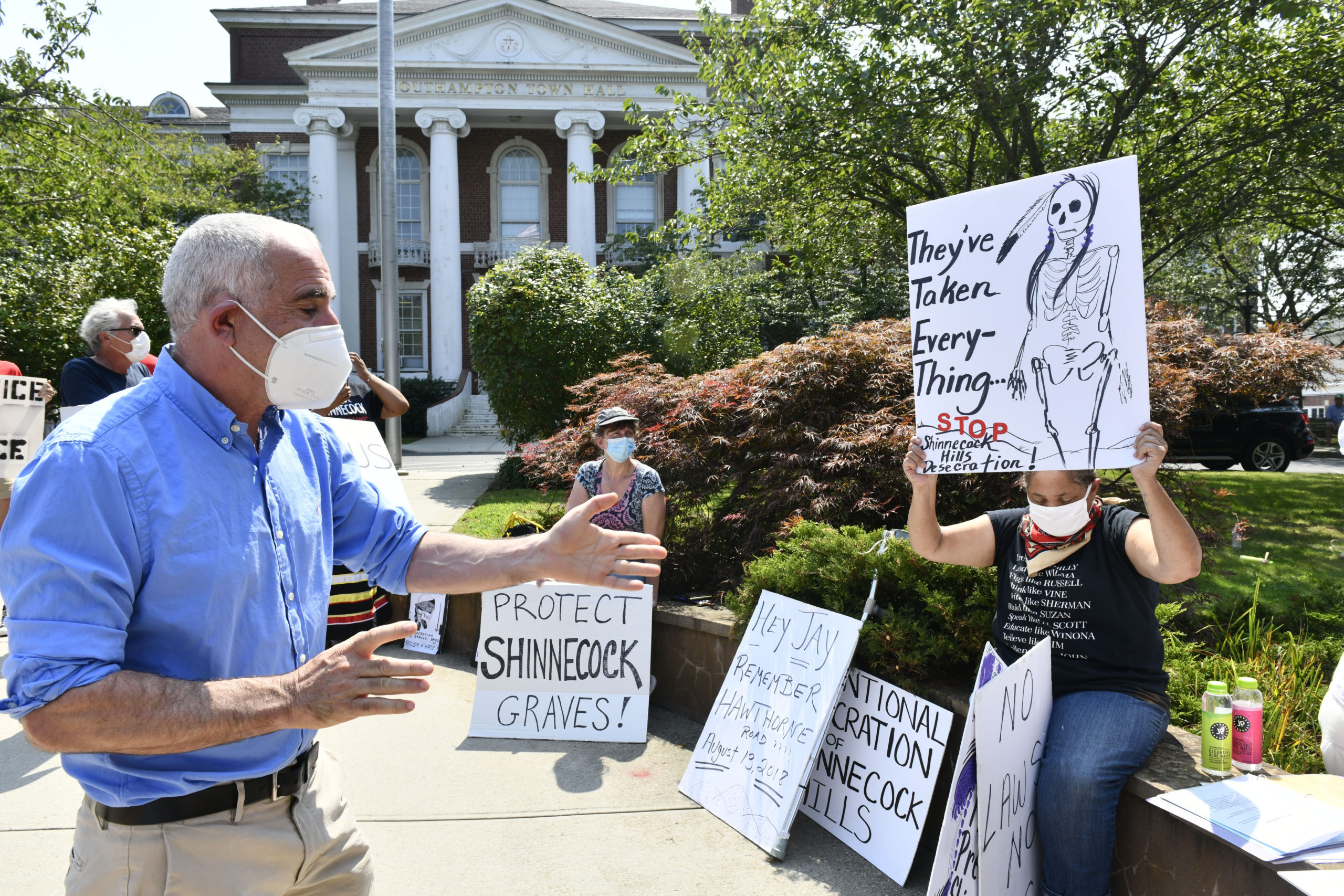
With nary a comment from the public, the Southampton Town Board in November approved a new law aimed at protecting graves and other culturally significant sites in town — particularly those in Shinnecock Hills and other areas inhabited by the Shinnecock Nation.
The measure follows the board’s passage of a graves protection act in September 2020, two years after workers at a construction site on Hawthorne Road in Shinnecock Hills disturbed a Shinnecock grave.
That discovery gave new energy to a longstanding effort by members of the tribe to convince the town to become more serious about protecting graves and other sites of cultural significance to the tribe.
Before the board, at its November 23 meeting, approved the law creating what is called a cultural resources protection overlay district, Supervisor Jay Schneiderman said he was surprised there had not been opposition from property owners. But he added that the town had tried “to craft a law that wasn’t too onerous but was respectful of the ancestors of the people who are here today.”
Councilman John Bouvier called the adoption of the new code provisions as “a win-win all the way around to me,” while Councilman Tommy John Schiavoni said it was long overdue. “The fact that something like this hasn’t been adopted in Southampton, I find a bit surprising, considering our history,” he said.
Schneiderman has said he was shocked to learn that the town did not have a graves protection law on the books when remains were unearthed at the Hawthorne Road site in 2018, and even more shocked when he learned that New York was one of only four states in the country to not have a statewide graves protection law.
“It was surprising to me that we didn’t have anything on our books that would require some basic archaeology before you dig a foundation or build a significant addition to a home,” he said.
Once the town adopted the graves protection law, which requires developers to stop work, notify the police and follow other protocols if remains are found, it began work on a broader measure.
While the town crafted what became the cultural resources protection overlay district, it imposed a development moratorium on two areas in Shinnecock Hills. One surrounded the Sugar Loaf site, a known Shinnecock burial ground that was preserved last summer through the joint efforts of the town and the Peconic Land Trust. The other moratorium area is the nearby Fort Hill area.
Schneiderman said while those two areas are included, the overlay district is much more expansive and includes land to the north and east — including the Shinnecock Hills Golf Club and the National Golf Links of America. Areas that were known to have colonial-era cemeteries also will be included.
Town Planning Director David Wilcox said via email that a total of 595 parcels covering 1,908 acres will be placed in the overlay district. Of those properties, 76 percent are already residentially developed, while 16 percent are vacant, residentially zoned lots. Another 8 percent are commercially developed properties.
Wilcox said the town was loading the properties into its Geographic Information System, so that anyone searching on a property would be notified that the properties were designated as part of the overlay district.
The new law will require that developers seeking building permits or subdivision or site plan approvals in the overlay district must provide a “site disturbance plan” outlining the extent of the work they will do at the site. They could be required to perform basic archaeological field research or more extensive archaeological studies, depending on the extent of the work.
Schneiderman said the new code provisions are complicated and may require future tweaking, and he made a point to tell Janice Scherer, the town’s planning and development administrator, to keep the Town Board informed. “If you run into issues, please feel free to come back to us,” he said.